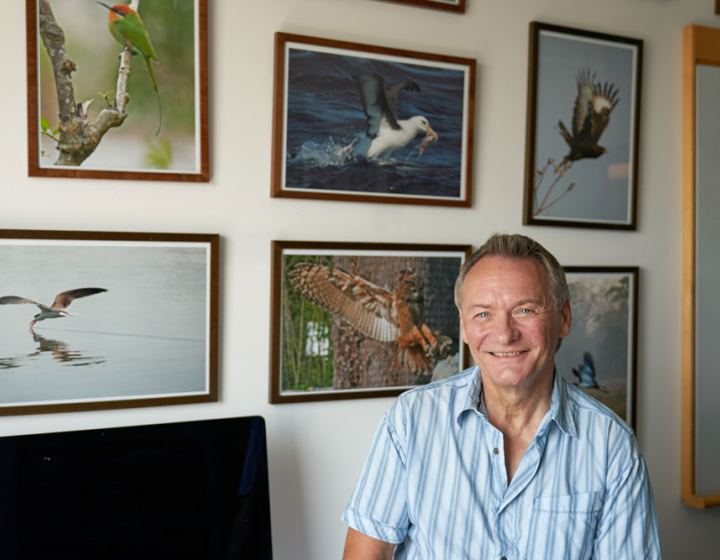Helping cartilage heal itself
An interdisciplinary team of Cornell researchers led by Dr. Michelle Delco D.V.M. ’02, PhD ’16 has made a series of discoveries that offer a new explanation of how stem cells can prevent cartilage loss and chronic pain after joint injury, a development that paves the way for new arthritis treatments in animals and humans.
“Cartilage is an amazing tissue,” said Delco, the Harry M. Zweig Assistant Professor in Equine Health and a large animal orthopedic surgeon at the Cornell Hospital for Animals. “It provides shock absorption and joint lubrication every time we take a step. It has to endure a lifetime of wear and tear, but has little or no ability to heal. Even after decades of research, we have no reliable treatments to prevent arthritis after a joint injury.”
For the past 30 years, researchers have been exploring mesenchymal stromal cells (MSCs), a type of adult stem cell, to promote healing of many tissue types. But results have varied widely, and it remains unclear how MSCs work. Initially, researchers thought that since these cells have the ability to transform into many cell types, MSCs would directly replace damaged tissues. However, recent evidence suggests MSCs instead help injured tissue heal itself.
In a study published in the journal Scientific Reports, Delco and her team discovered stem cell’s healing properties may come down to mitochondria, tiny structures within the cell often referred to as the “powerhouse” of the cell. In addition to producing energy, mitochondria help dictate when old or injured cells are destroyed and provide building blocks for tissue repair.
Delco’s work showed that stem cells can rescue injured cartilage cells by donating healthy mitochondria, a process called mitochondrial transfer. Previously, Delco’s group discovered that when cartilage is injured, mitochondrial function declines, which leads to cartilage loss and ultimately causes osteoarthritis.
“These results were exciting because they provided a new perspective,” Delco explained. “In the past, we had not really recognized the importance of mitochondria in the development of arthritis. We have learned that if we can find new ways to supplement mitochondrial function, we may find ways to heal cartilage.”
In a series of experiments, Delco and her team marked cartilage cells with a green colored protein, then placed the cells under various stressful conditions. They marked the mitochondria inside stem cells with a red colored protein, and used them to treat the injured cells. When examined under a microscope, they could repeatedly see the stem cell’s mitochondria transfer to the cartilage cells.
The team went on to perform this test in pieces of cartilage tissue. This step relied on a long-standing collaboration between Delco and Dr. Lawrence Bonassar, a professor in Cornell’s Meinig School of Biomedical Engineering whose laboratory focuses on cartilage biomechanics.
Working together, Delco and Bonassar developed a system that can mechanically injure cartilage tissue in a way that mirrors naturally-occurring injuries. They use an impactor – essentially a small, spring-loaded hammer – to injure cartilage tissue in the laboratory or during minimally-invasive joint surgery. “The impactor creates injuries that look very similar to the disease progression that Michelle sees in her patients,” Bonassar said.
In this most recent series of experiments, the research team could actually see the mitochondria at work, Bonassar explained. “If you put stem cells on healthy cartilage, the cells don’t stick,” he said. “But when you put the stem cells on damaged cartilage, they stick to the cracks. In some cases, the stem cells burrow deep into the tissue. They appear to connect directly with cells adjacent to them.”
The next step is to better understand how and why this occurs. “We believe the cartilage cells are calling for help somehow,” Delco said. “We want to find out what signals they are putting out to cause the stem cells to snuggle up to them and share their mitochondria. By understanding how and when transfer happens, we can engineer new treatments to amplify it.”
On this front, Delco's group published a second paper in Frontiers in Bioengineering and Biotechnology. This time, they conducted their experiments on human cartilage cells. They found stem cells package and export their mitochondria in extracellular vesicles, a sort of cellular envelope. They call these mitochondria-containing packages “mitovesicles.”
“We found that stressed cartilage cells can take up these ‘mitovesicles,’ incorporate them into their own mitochondrial networks, and that this improves their function and energy production.” Delco said. “Of course, more work needs to be done on this front, but it’s exciting because it suggests we may be able to use these mitovesicles made by MSCs as a ‘cell-free’ regenerative therapy, rather than using the stem cells themselves.”
Developing a therapy that doesn’t require live cells would be a big step forward because harvesting, growing, and injecting stem cells is more complicated and expensive. “A ‘cell-free’ treatment could be stored and used as needed,” Delco said. “That would remove some of the barriers to regenerative therapy.
“People have been studying how injury leads to cartilage loss and osteoarthritis for a long time – many decades. But we still haven’t found a therapy that can slow down cartilage degeneration, let alone help cartilage regenerate once it’s lost,” she said. “Now we are zeroing in on a strategy to help cartilage heal itself.”
Written by Sheri Hall




